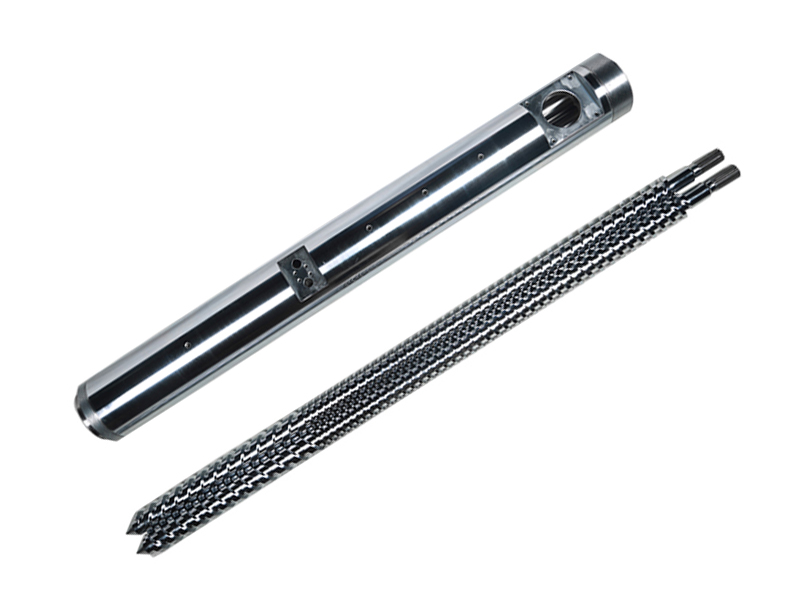

The twin-screw extruder is a kind of equipment mainly f […]
The twin-screw extruder is a kind of equipment mainly for extruding and forming plastic products, and has good performance. When using it, pay attention to protecting its screw, otherwise it is easy to damage and affect its normal use. If damage occurs, repair it in time to find the reason.
What are the reasons for the damage of the screw of the twin-screw extruder?
1. The screw of the granulator rotates in the barrel, and the friction between the material and the two causes the working surface of the screw and the barrel to gradually wear and the diameter of the screw gradually decreases, and the diameter of the inner hole of the barrel gradually increases. In this way, the matching diameter gap between the screw and the barrel increases a little as the two gradually wear.
2. Since the resistance of the head and the splitter plate in front of the barrel has not changed, this increases the residual amount of the extruded material when it advances, that is, the amount of material flowing from the diameter gap to the feeding direction increases. As a result, the production capacity of the granulator is reduced.
3. Because the material is not plasticized uniformly, or metal foreign matter is mixed into the material, the torque of the screw of the granulator suddenly increases. This torque exceeds the strength limit of the screw, causing the screw to twist and break.
4. If there are fillers such as calcium carbonate and glass fiber in the material, it will accelerate the abrasion of the screw and barrel of the granulator.
How to repair the screw of a twin-screw extruder?
1. The twisted screw should be carefully checked for serious damage to the barrel. If the barrel can continue to be used, it should be considered according to the actual inner diameter of the barrel, and the outer diameter deviation of the new screw should be given according to the normal gap with the barrel. manufacture.
2. After the surface of the thread with the reduced diameter of the worn screw is treated, it is thermally sprayed with a wear-resistant alloy, generally thickened to 2-3mm, and then processed to size by grinding.
3. Overlay welding of wear-resistant alloy on the threaded part of the worn screw. According to the degree of screw wear, surfacing welding is 1~2mm thick, and then grinding the screw to size. This wear-resistant alloy is composed of materials such as C, Cr, Vi, Co, W, and B to increase the wear resistance and corrosion resistance of the screw.
4. Hard chromium plating can also be used to repair the screw. Chromium is also a wear-resistant and corrosion-resistant metal, but the hard chromium layer is easier to fall off.
www.cjscrewbarrel.com
